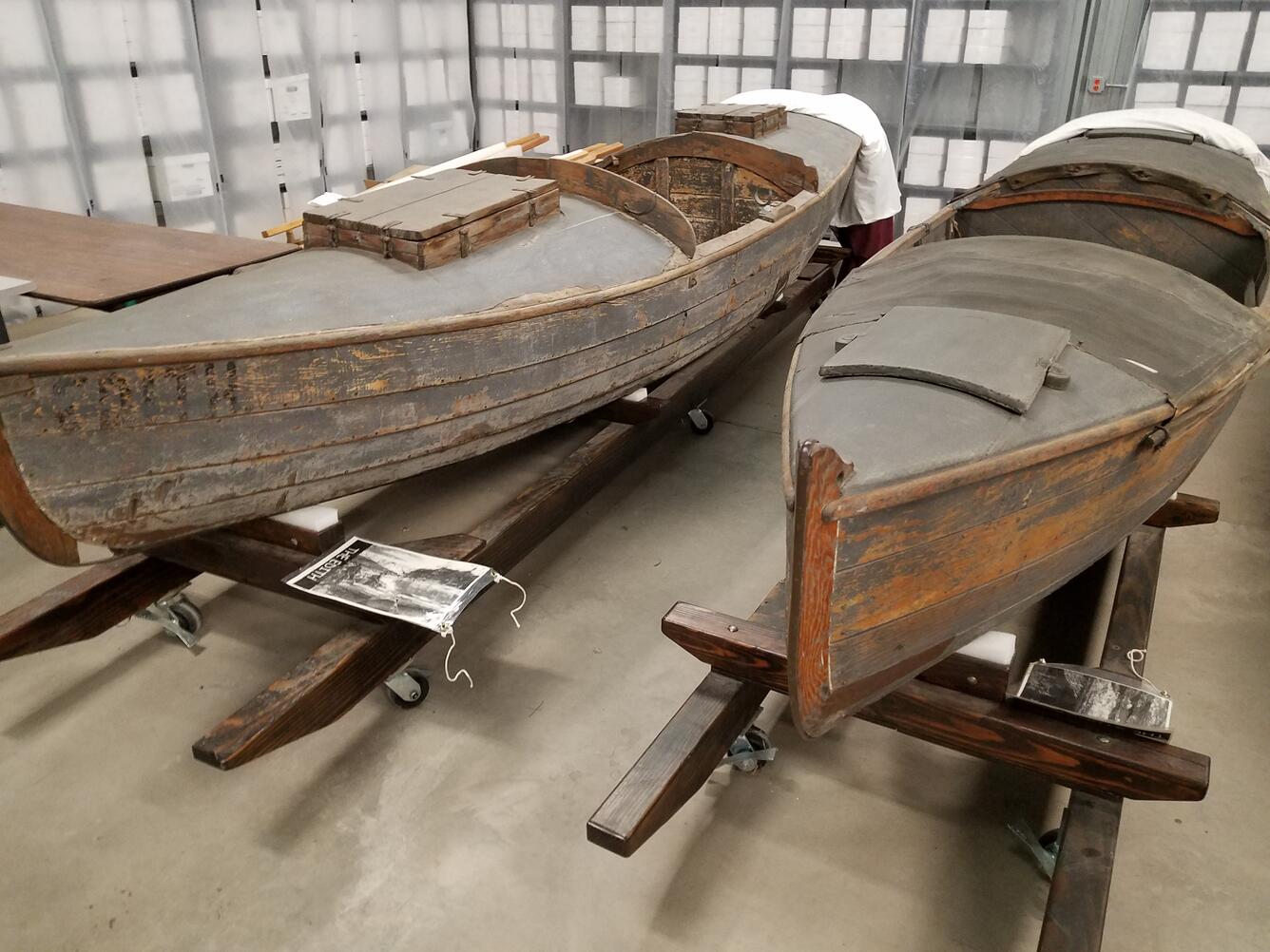“I am convinced that no man has ever run such rapids on a raft…
One thing is pretty certain—no rocks ever made can make much worse rapids than we now have.”— George Young Bradley, 1869
This year marks the 150th anniversary— or sesquicentennial — of the historic expedition down the Green and Colorado rivers that Maj. John Wesley Powell and his nine-man crew undertook to survey one of the least explored regions of the West. How was whitewater boating done then and how is this year’s expedition navigating the river?
In the 19th Century
When Powell and his crew set off with three 21-foot round-bottomed rowboats and a 16-foot lightweight rowboat, outfitted with three watertight compartments in each boat to carry food, instruments and supplies, they faced a wild and naturally flowing river with no dams or reservoirs. It was a journey of exploration and adventure, and safety precautions were minimal.
Powell’s boats were sleek and deeply-hulled Whitehall craft, designed to move quickly through harbors and lakes. One or two boat operators faced upstream while paddling, with a man in the stern steering via an oar or rudder. By the turn of the century, Colorado River navigators had abandoned this design in favor of shallower hulls and downstream-facing paddlers.
Since the Whitehalls did not navigate well through shallow, rocky rapids, the crew had to portage all four of the boats through most of the whitewater reaches. At the more severe rapids, they had to remove and carry all the supplies and equipment from the boats. The boats were either laboriously carried or “lined” down as far as the ropes would take them, then dropped for the men below to catch them.
On June 9, 1869, the team reached “the wildest rapid yet seen,” which they named Disaster Falls. Three of the four boats were pulled onto the shore to be portaged but the fourth, aptly named No Name, was too far out in the current and had picked up water in the rapid above. The boat hit rocks, but the crew managed to swim to a small island as the boat struck more rocks and was destroyed. The team lost all the supplies on that boat but managed to recover a small amount of the equipment used for elevation measurements…and a jug of whiskey.
In the 21st Century
The 2019 Sesquicentennial Colorado River Exploring Expedition (SCREE), which includes 28 participants from the USGS, shares the same goals of traversing the nearly 1,000 miles of Green and Colorado rivers and collecting data, but the equipment and river are much changed since Powell’s era.
SCREE navigates the river on five 18-foot, self-bailing, inflatable rafts, equipped with rigging to facilitate paddling, seating and storage of supplies. Boat operators face downstream, so they can see the rapids ahead of them, and the rafts are highly maneuverable. Their gear includes lifejackets, throwbags, helmets and satellite communication devices, and participants have received many hours of safety training.
Three major dams — Flaming Gorge, Glen Canyon, and Hoover — have been built on this stretch of the Green and Colorado Rrvers since Powell’s expedition. SCREE will take advantage of well-developed roads and take-out/put-in ramps to get around these and other barriers. The previously roiling waters of the rivers now include extensive stretches of slow moving and even flat water, though there are still class III and IV rapids on both rivers to challenge the crew.
In early June, it was SCREE’s turn to face Disaster Falls, the feature that had caused so many problems for their predecessors, as well as Hell’s Half Mile, which the 1869 crew had to line. Fortunately, modern rafts are far more forgiving than wooden boats and easy to move laterally across the river, and this year’s crew is extremely experienced in comparison to Powell’s. Nonetheless, it was an exciting stretch, requiring high siding (moving bodies to the high side of the boat to redistribute weight) and paddle work to keep the rafts off the rocks. One of the boats got hung up on a rock in the middle of the falls for several minutes before the boatman could maneuver it off the obstacle. All the participants and boats came through unscathed. Although they were “rigged to flip”, as always, there was no need, this time, to recover lost equipment.
Visit www.usgs.gov/powell150 to learn more about this year’s expedition.






